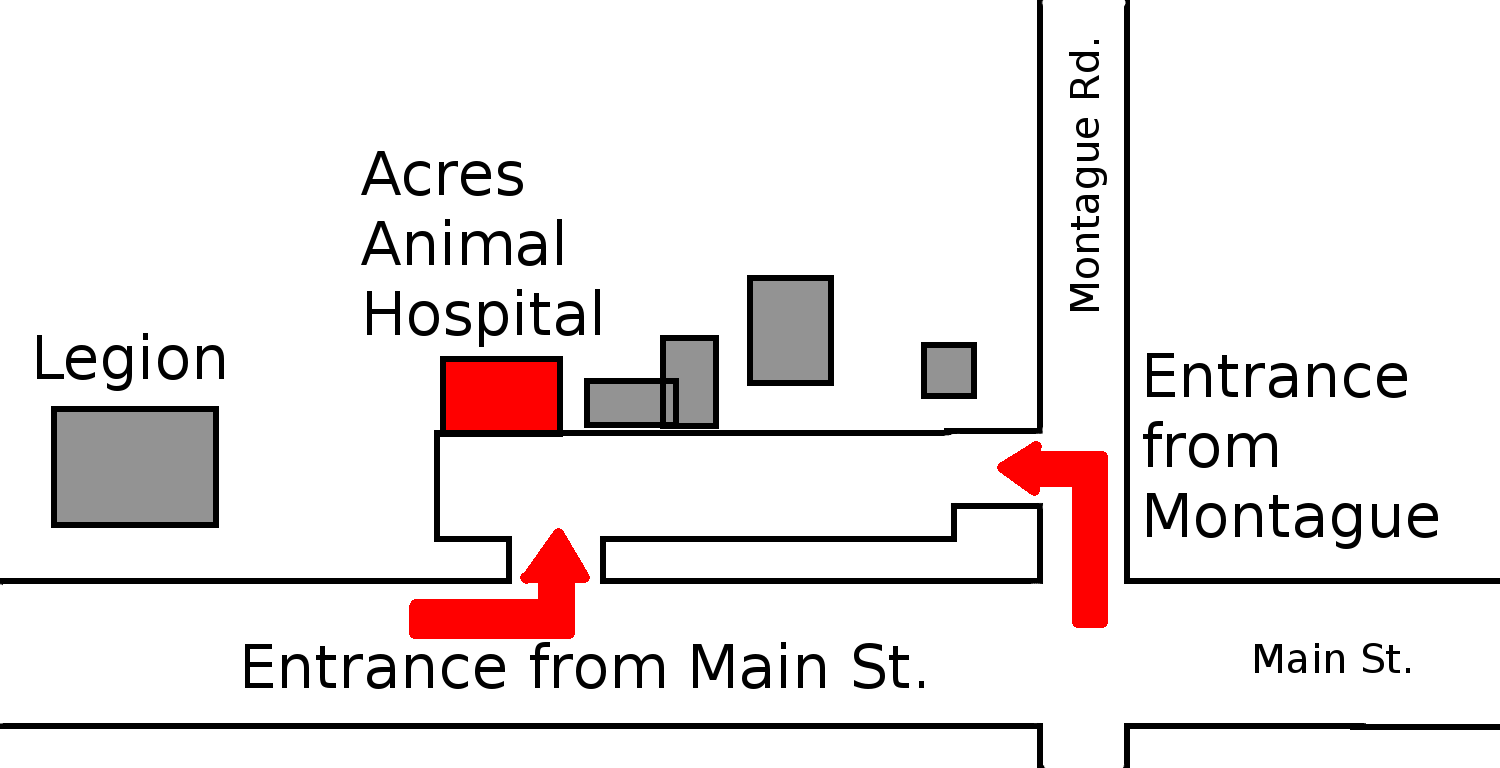HRM will be doing road work on Main St. (Highway 7) this summer, including from Forest Hills Parkway to Montague Road. It may be easier to enter the Parking lot at Acres from Montague Road than from Main Street. When traveling east (away from the city), turn left (north) onto Montague Road at the lights just past Acres, then make an immediate left into the parking lot.
If traffic along Main Street is congested, you may also find it easier to travel along an alternate route. There are a few suggestions below:
From the Forest Fills Extension, you can take the Montague Rd exit and travel down Montague Rd. to the animal hospital.
From Cole Harbour Road, you can travel along John Stewart and Auburn to Hildebrand, bypassing Main Street.
From Forest Hills, you can travel along Taranaki and Karen to Hildebrand, bypassing Main St.
From Tacoma, you can travel along Mount Edward, to Main St. and Brigadoon. Or you can bypass Main St. entirely by traveling down Wildwood to Flying Cloud and Taranaki.






Recent Comments